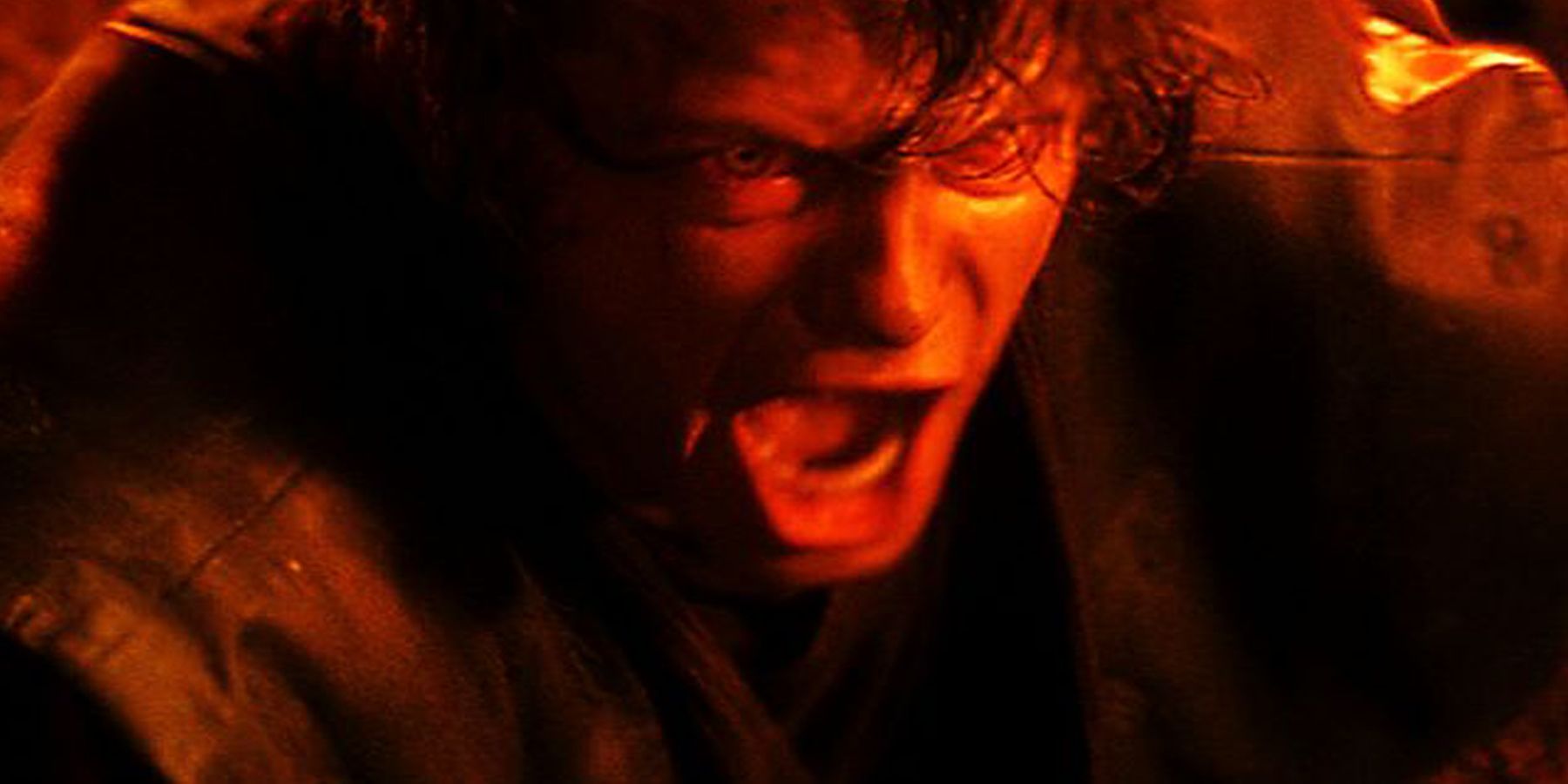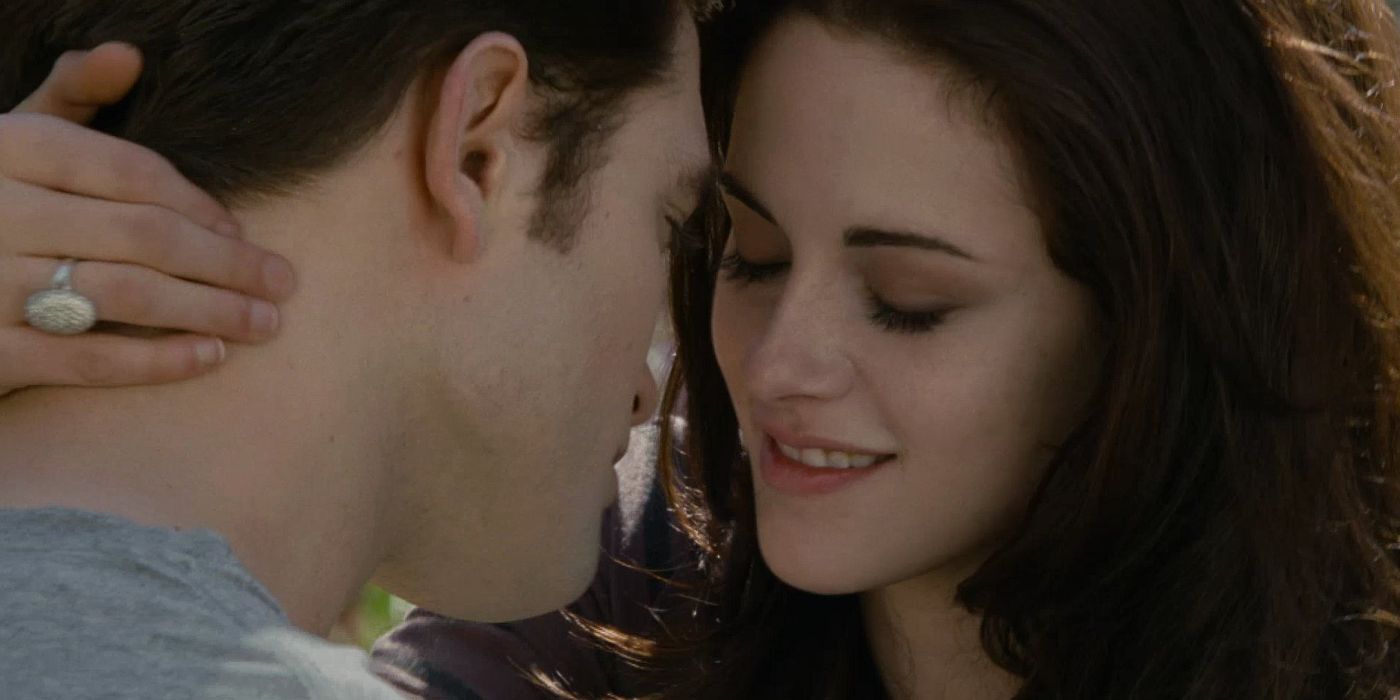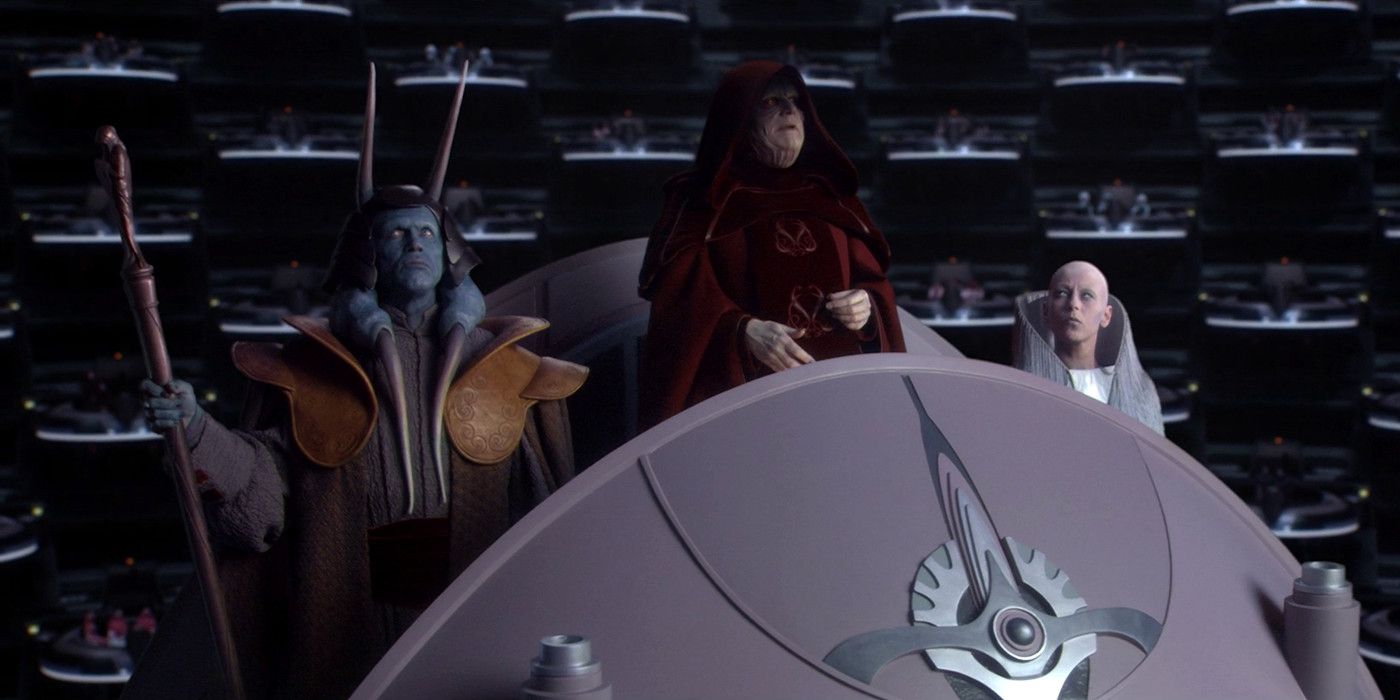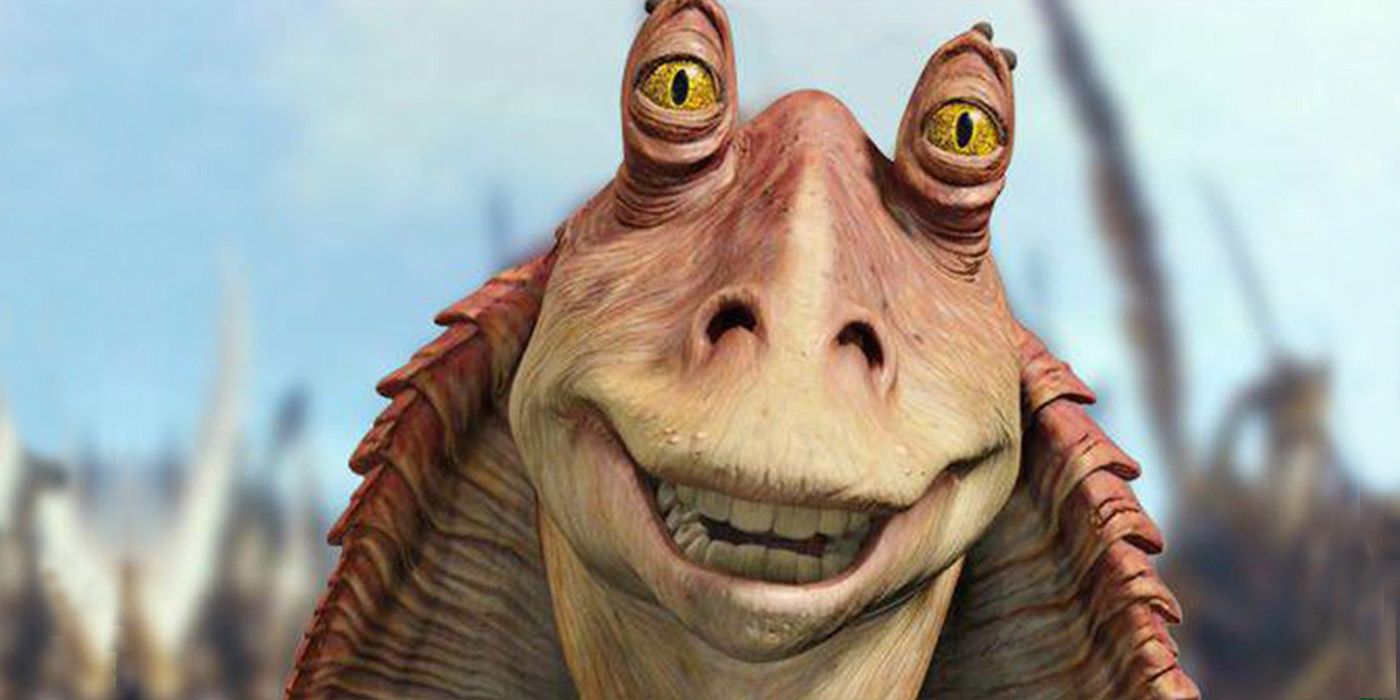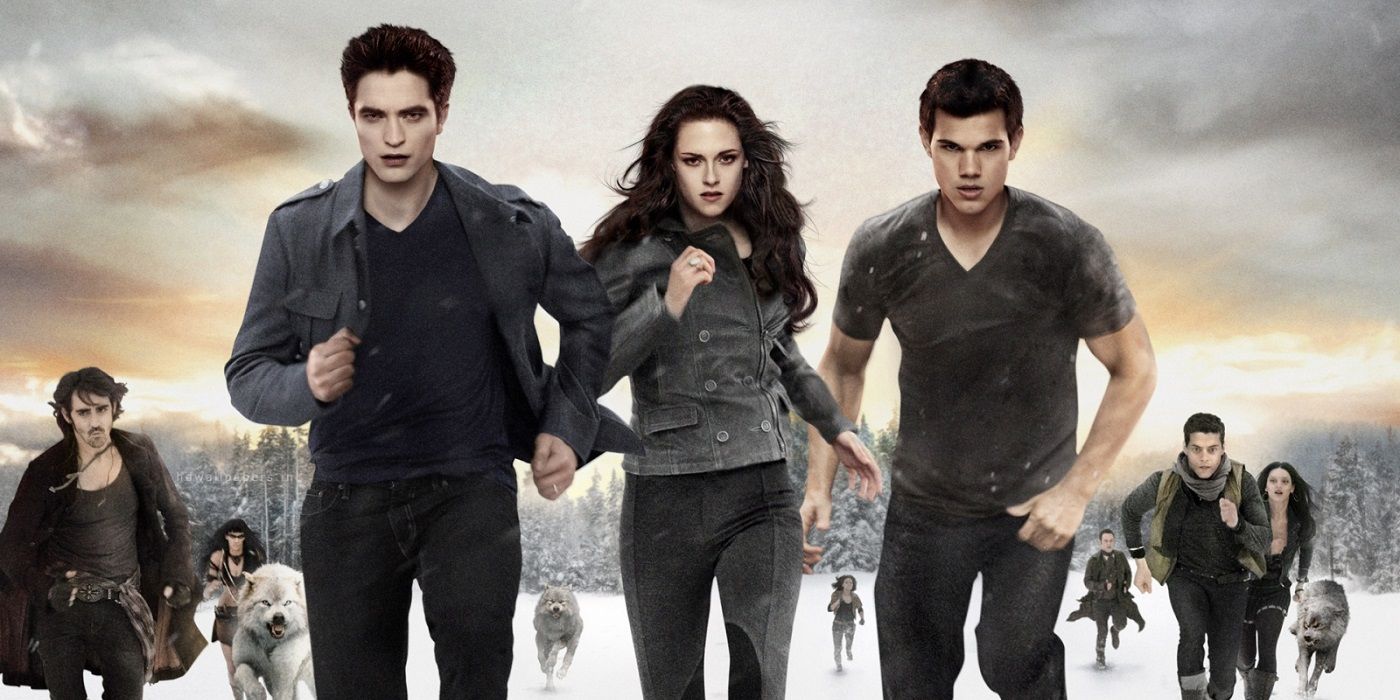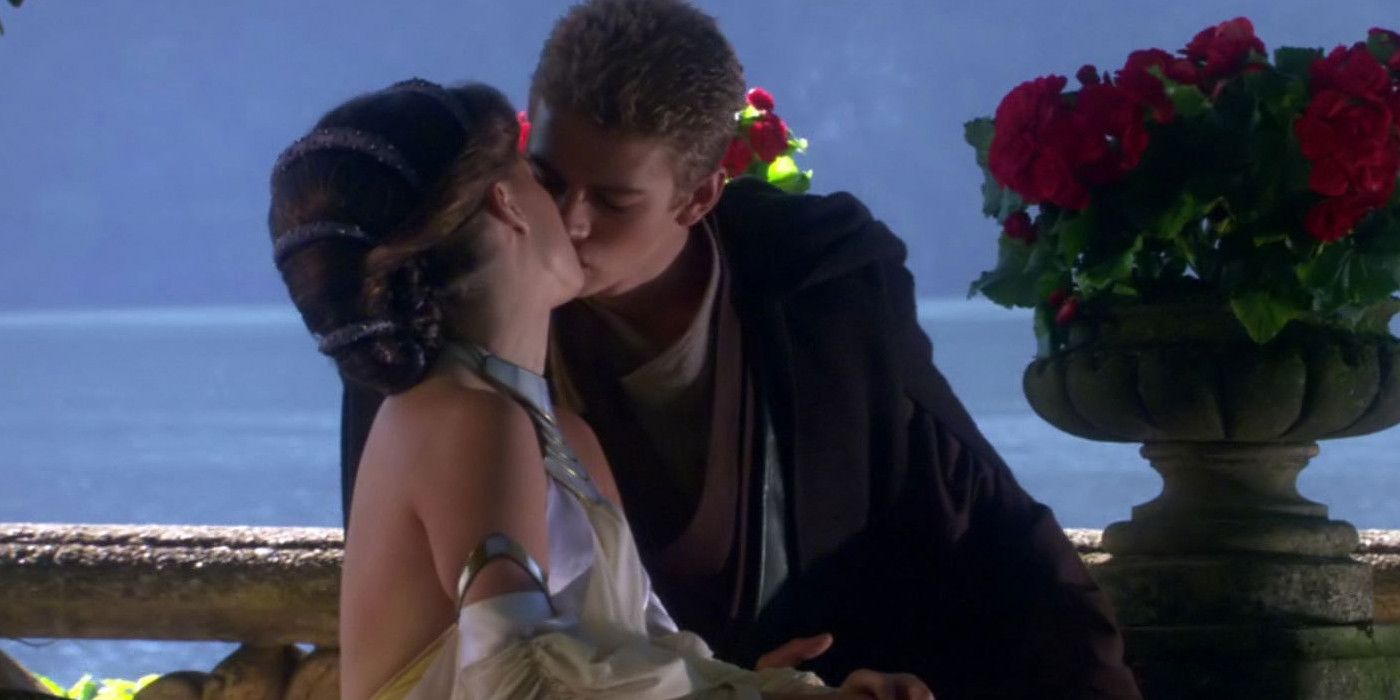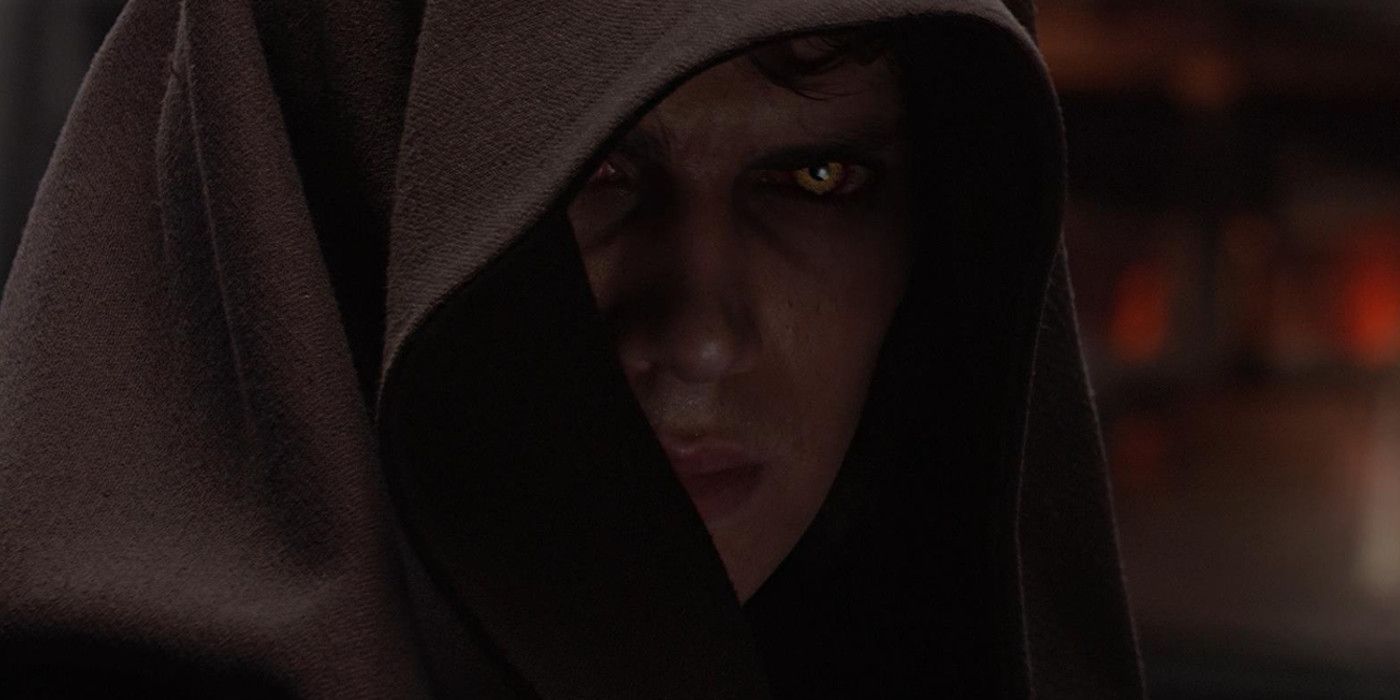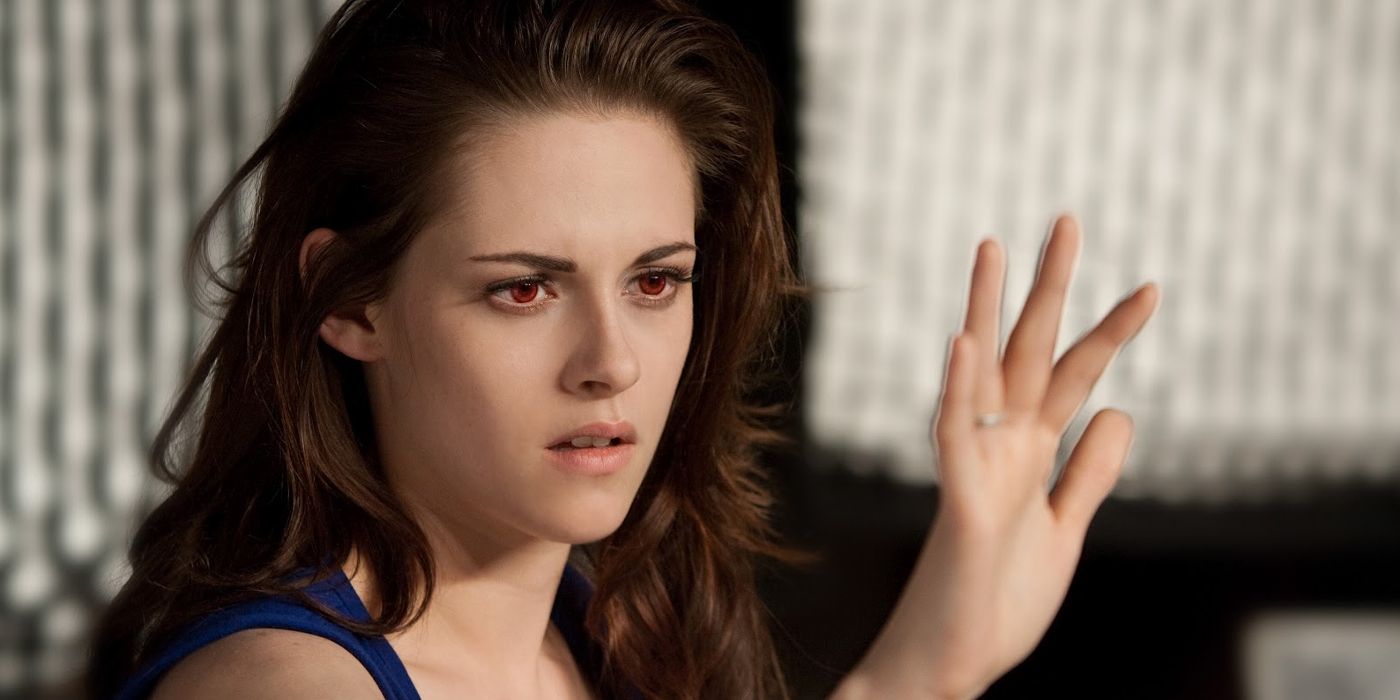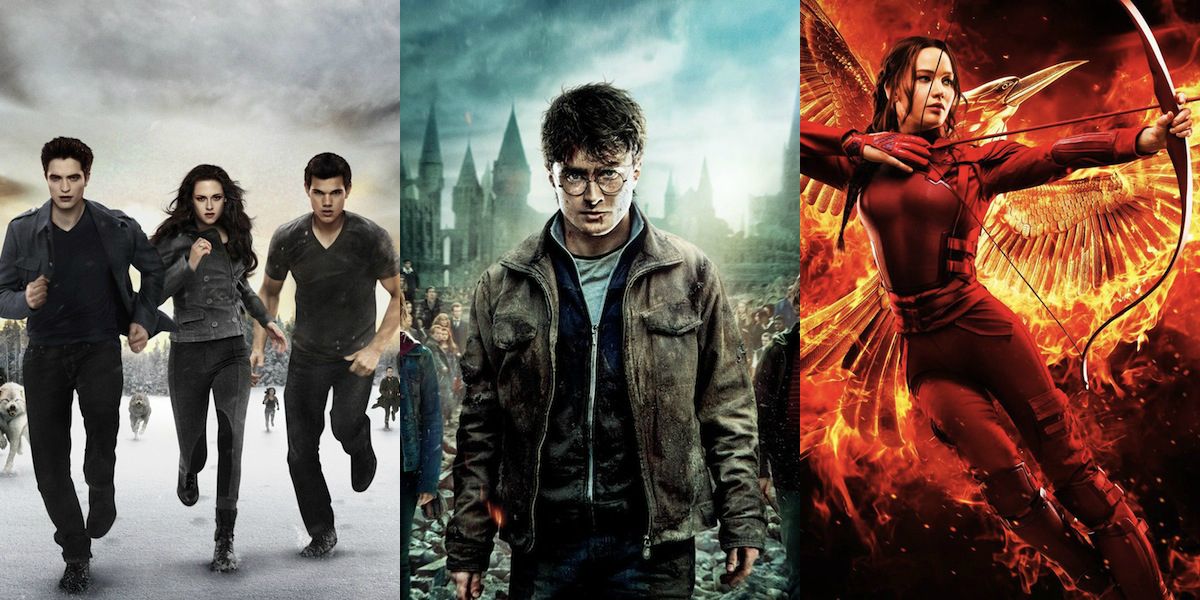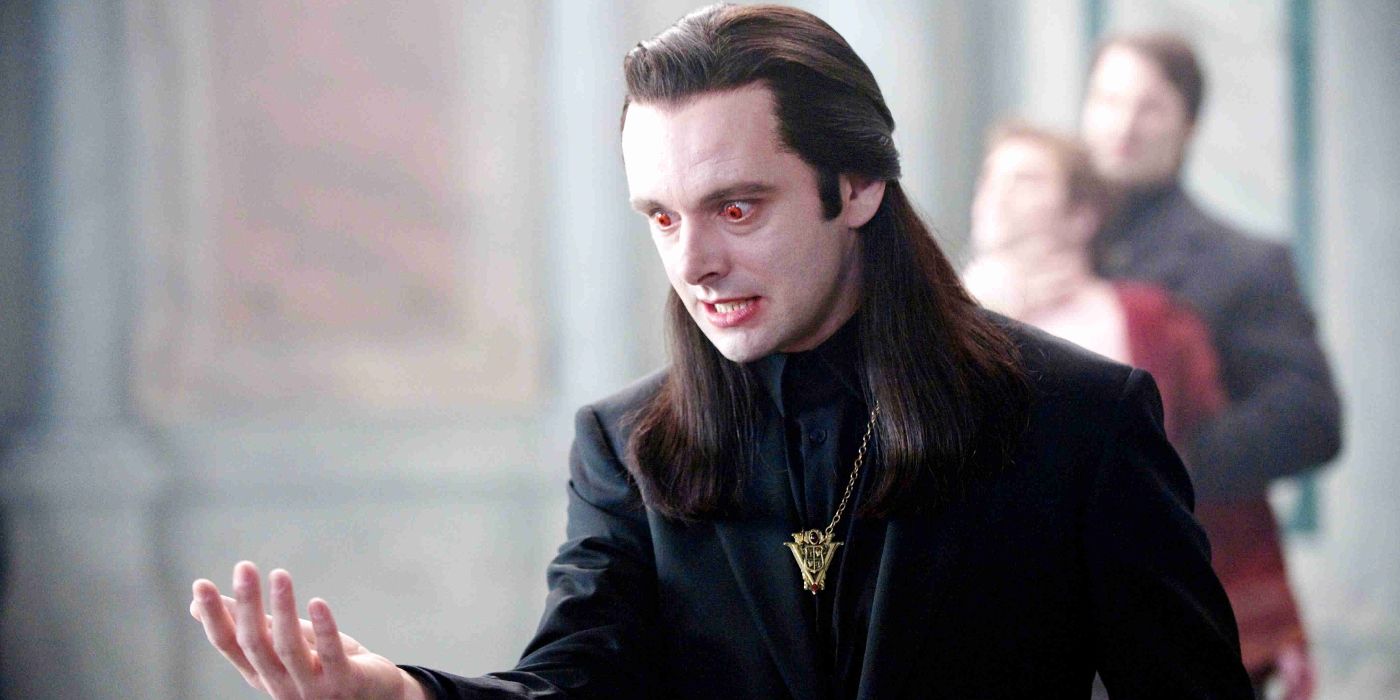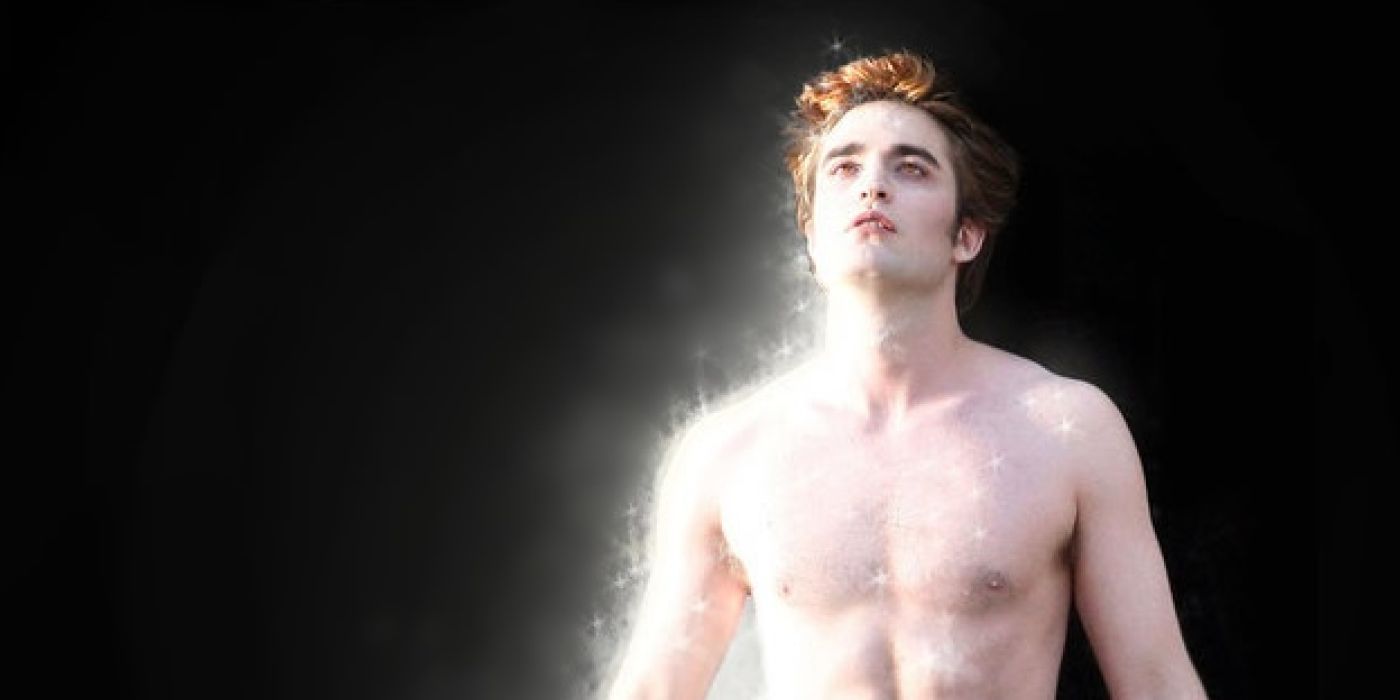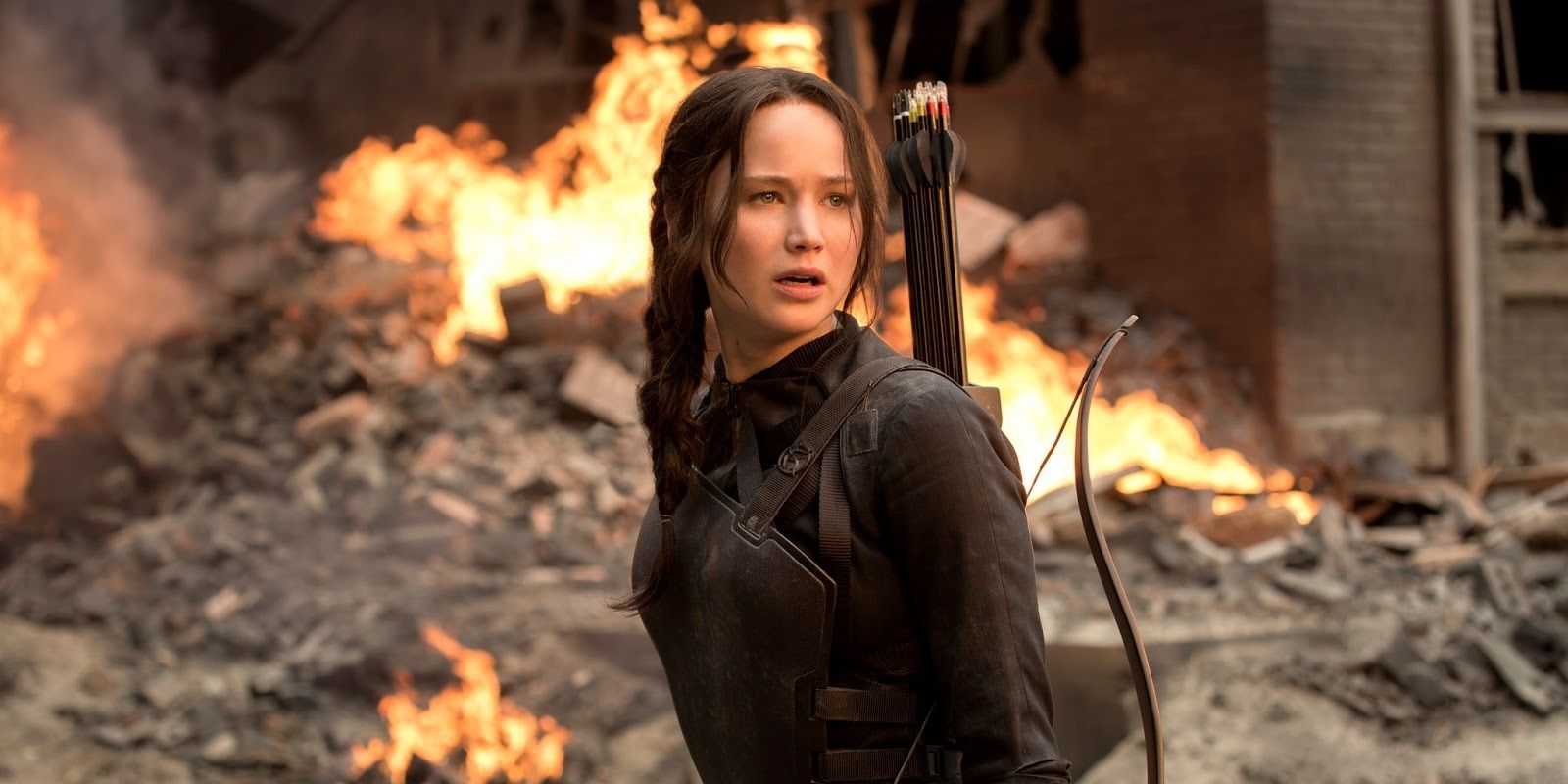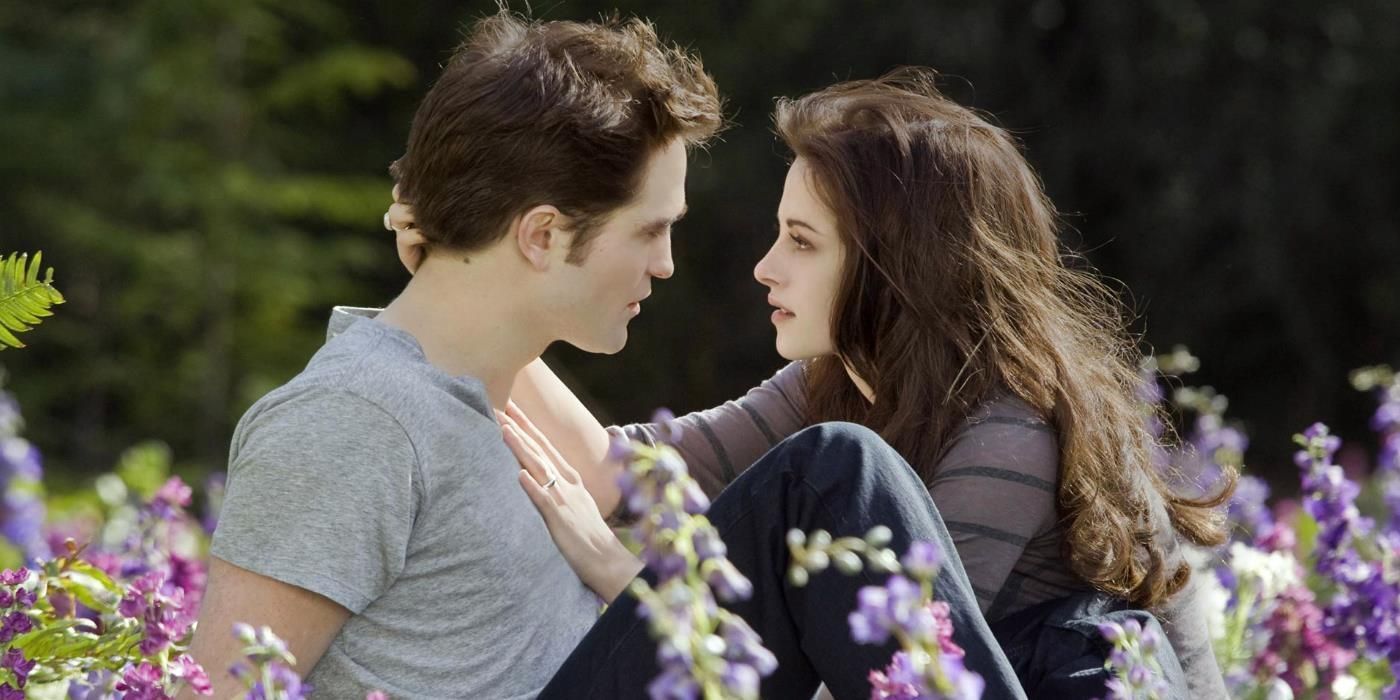Comparing the Twilight saga to the Star Wars prequels may seem like a classic case of apples and oranges, but there are a surprising number of similarities-- even outside of them both falling under the vague umbrella of "fantasy adventure" and having incredibly passionate fanbases. Many of the criticisms of both franchises echo each other, with overwrought drama, an over-reliance on cliché, and the cardboard cut-out characters being the main points of contention.
Both series have their good and bad points, but the hate for the Twilight saga has been particularly venomous. Thankfully, most of the hubbub surrounding both controversial franchises has died down, but there's still something to be said for casting a critical eye over both phenomenons to see if we can learn anything going forward. It could be argued that many films, such as Michael Bay's Transformers franchise, seem to get away with the same glaring faults that were used as sticks to beat Twilight movies into submission. Critically, the Star Wars prequels garnered better write-ups and are generally regarded as better films, but as we all know, they weren't exactly runaway successes with fans.
Here are the 12 Ways Twilight Is Better Than The Star Wars Prequels
12. Better sense of humor
The Twilight series has a reputation for being on the mopey side and taking itself rather seriously. Bella Swan barely cracks a smile over the course of the five films and Edward Cullen isn't exactly the life of the party either. However, the movies do have a surprising sense of self-aware humor. At times, it could even be said that the movies are lampooning the clunkily written source material.
This weird sense of humor can be best seen in New Moon, when Bella, Jacob, and some guy named Mike go to see a violent action movie called Face Punch. The whole scene is very tongue-in-cheek and definitely played for laughs. Listen to those ridiculously over-the-top sound effects. Not to mention, the violence gets too much for Mike, who has to duck out to throw up. Jacob also gets a perfectly corny line in response to all this: “What a marshmallow!”
Sure, it may not be a thigh-slapper of a gag, but for a series generally thought of as taking itself incredibly seriously, it's an interesting counterpoint. Compare this to the prequel trilogy, which relied on Jar Jar's antics in The Phantom Menace and awkward, insufferable “comedy” scenes like C-3PO's experience as a battle droid in Attack of the Clones to theoretically bring the laughs. It's hard to argue which one tickled the most funny bones.
11. Less focus on boring politics
Episodes I, II and III had a strange predilection for showing scenes of all the pulse-pounding political rhetoric you could ever want. Don't get us wrong, having politics in your movie does not make it boring. However, the poorly-written and lengthy monologues featured in the prequel trilogy do their best to kill the pacing and grind all the fun space adventure stuff to a halt.
Palpatine is basically Space Hitler and his rise to power reflects that as he insidiously (pun unintended) undermines the previous establishment, is granted emergency powers, and subsequently completely takes over the government. Done right, it could have been a fantastic backstory for one of the biggest jerks in the galaxy. As it stands, we have interminable talks about trade embargoes and vague political musings that don't go anywhere.
This is more of a prequel flaw than a Twilight win, but Twilight touches on politics too. Both the vampire Volturi and the wolves have their own codes and traditions and Bella shakes up the system, causing a huge conflict. There are many scenes dedicated to explaining vampire and werewolf lore and each has their own hierarchy. These bits are brief and normally lead to some kind of definitive action.
Crucially, they're more related to the main narrative than Palpatine's slow corruption of the Galactic Senate and so feel like necessary inclusions. You could remove most of the political speechmaking from the prequel trilogy and it wouldn't affect the course of the narrative in any significant way.
10. Fewer annoying CGI characters
It may be a bit passé to rag on Jar Jar, as that particular dead horse is nothing but a fine bone dust now, but even if you prepare yourself for the anti-hilarious slapstick and irritating catchphrases like “How wude!” it's hard to stomach just how much Binks The Phantom Menace contains. He's in most of the significant scenes of the movie and, if you're not a fan, ignoring the Gungan goof can be a real challenge.
The Twilight series, on the other hand, had nowhere near the Star Wars budget... and it shows. CGI characters are used sparingly and when they do show up, they're normally not on screen for very long. The only real CGI characters we're presented with are the huge wolves that Jacob and his pack shapeshift into, who only occasionally talk. The scenes don't work very well, but they aren't just wacky non-sequiturs and actually drive the plot forward. The effects may not be particularly convincing, but at least none of the wolves step in “poodoo” and indulge in the sort of pratfalling that would embarrass a six-year old.
9. More coherent battle
The prequels certainly have their action high points, but few reached the levels of the Darth Maul fight. Take Episode II's arena sequence for example, the screen is so over-stuffed that it's hard to tell what's going on, let alone care. Our Jedi heroes snap into action mode, easily dispatching foes left and right, barely breaking a sweat. The lightsaber wielding badasses are never in any real peril and it totally kills the drama, no matter how sweet their fighting skills are. There's also the awful aforementioned C-3PO skit It's too much to take in and ends up having a numbing effect.
Then take the final battle between the old guard Volturi vampires and Bella's crew, consisting of the Cullens, their fanged friends and Jacob's tribe of lycanthropic lads. They start fairly similarly: two sides lining up before running full pelt at each other, but the huge Twilight smackdown kicks things up several ludicrous notches with a tighter focus on the main players and a surprising brutality, with several decapitations, burnings, wolf maulings and even a bit where Elliot from Mr. Robot splits the ground with a single strike.
Several key characters end up dying nasty deaths and it's over-the-top corny fun. Some points are taken away when it turns out that the battle is one of psychic Alice's vision and never actually happened, which is a hair's breadth away from the irritating no-stakes “it was all a dream” trope. However, while it's happening, it's downright entertaining.
8. Less cringeworthy dialogue
This point is admittedly more controversial than most, since both series have their share of face-clawingly awful dialogue, but hear us out. As previously mentioned, many Twilight fans aren't ignorant of the books' numerous flaws. The movies do a decent job of mitigating most of the wince-inducing passages in the book, and while the writing was never going to win any awards, it's pretty functional and inoffensive for the most part.
As far as the prequels go, you just have to mention the word “sand” to Star Wars fans and they'll shudder. Some of the dialogue in the prequels in legendarily bad. If it's not the infamous “I don't like sand” moment, it's the “Are you an angel?” exchange in The Phantom Menace or anything Jar Jar dribbles out of his supremely slappable face.
With Twilight, it's almost like the corny dialogue is part of its charm. The fans were aware of it going in to the movies and were fine with it. With the prequels, the tin-eared exchanges of verbal clunkers were a nasty surprise.
7. Less wooden acting
As both Bella and Edward pull around four expressions each across the five movies, it's easy to see how people have criticized the acting abilities of both Kristen Stewart and especially Robert Pattinson. Here's the caveat: both actors have since proven their acting chops elsewhere.
Kristen Stewart has worked on a multitude of films since and became the first American to win the prestigious César Award for her supporting role in Clouds of Sils Maria. R-Pattz hasn't been doing too badly for himself either, working with esteemed director David Cronenberg twice on Cosmopolis and Maps to the Stars and receiving critical praise for both. And considering both actors have been praised elsewhere, isn't it likely that the sullen nature of Cullen & co. is more down to an intentional performance than lack of ability? After all, brooding and looking serious all the time is part of the vampire deal.
As for the prequels, well, in Phantom Menace you have spectacular non-actor Jake Lloyd and in Attack of the Clones and Revenge of the Sith you have the plywood Hayden Christensen. However, it isn't just the lead.
No matter how talented the actor in the prequels, there's something weirdly flat about everybody's performances. The Oscar-winning Natalie Portman can't do much to salvage Padmé's broken characterization and the usually entertaining Samuel L. Jackson ends up as the boring and aloof Jedi Master Mace Windu. With Twilight, you get the impression that the actors are fulfilling the roles they were signed on to do, wbut ith the prequels, it seems like some usually great and charismatic actors were given little to work with.
6. Better character progression
To be fair to the prequels, the Twilight saga had five films whereas the prequels were only a trilogy. Still, nobody says that Back to the Future needed more installments to develop its character.
The gap between The Phantom Menace and Attack of the Clones is the sticking point here. When the credits roll on Phantom Menace, Anakin is just a kid, officially taken on as Obi-Wan's Padawan. By Attack of the Clones, he's all grown up and practically a different person. The movies skip huge stretches of Anakin's life and we miss out on seeing his character develop over time.
When it comes time for Anakin to fall to the dark side and finally become Darth Vader in Revenge of the Sith, it feels rushed, as if he's been tricked by vague promises about being able to stop loved ones from dying. That isn't a tragic seduction of a once good man; that's the fleecing of a particularly gullible sheep.
Twilight, on the other hand, arguably does a better job of charting the development of its characters. Bella undergoes big changes, from being the new kid in school to being a lovesick girlfriend to being a mother at the center of a supernatural war. After she initially hooks up with Edward, her desire to become a vampire becomes her motivation-- something which Sparkly Ed refuses to do. It's only when Bella becomes pregnant and almost dies giving birth their daughter, Renesmee, that Cullen finally relents and turns her to save her life. It feels earned over the course of four movies.
5. Introduced younger female fans to the larger world of geekdom
It's been four years since Breaking Dawn - Part 2 and in internet terms, that's several lifetimes. Which makes it hard to remember just how big a phenomenon Twilight was. It was everywhere and at one point in the buzz around it, both negative and positive, was overwhelming. If anything, the detractors signal-boosted the whole thing, in that sort of self-defeating way where the people who claim to hate something can't go five minutes without bringing it up.
Star Wars has pretty universal appeal, but its main target audience is young males-- the kind with weary parents willing to buy little Johnny the action figures and a toy lightsaber on the condition he doesn't hit his sister with it. Twilight was the gateway for a big world of fandom for a lot of girls. It even had a controversial panel at the San Diego Comic-Con.
One of the best things about fandoms is that they bring like-minded people together to share their passions. It's a great feeling to be part of something and geeking out is the closest thing we have to a universal language that transcends age, gender, and cultural backgrounds. Just because some of us don't like something, doesn't mean we should exclude somebody for their personal preferences, especially if they're impressionable youths.
As Kevin Smith said in his sweary on-stage defence of the fandom, “that's the next generation” and now Twilight is over (for now) perhaps they've moved on to obsessing over bigger and better things.
4. The prequels didn't have Michael Sheen as a villain
It was reported recently that Michael Sheen may quit acting in the near future to focus on political activism. The actor has dismissed the claims that he's quitting acting for good, but his change of career path may end up meaning we see less of him on screen in the future, which would be a real shame.
Sheen's a great all-round actor, but perhaps his most enjoyable work is when he really hams things up, like his performance as Castor in Tron: Legacy. His turn as Volturi elder Aro definitely belongs at the scenery-chewing end of the Sheen spectrum. Aro is so downright weird that it makes him genuinely compelling to watch. One of the character's best moments is just before the super-powered punch-up in Breaking Dawn - Part 2, where he lets out a completely bizarre laugh that's genuinely funny when coupled with Bella's stony-faced reaction.
Some of the Star Wars prequels' villains may have looked cool, but they didn't have much personality when compared to the old-school baddies like Vader and the Emperor. The only one who gets close is Palpatine in Revenge of the Sith, when the figurative mask slips away and he delights in being as evil as possible. We're not saying that every movie needs a Michael Sheen-type villain to succeed, but surely a grand space opera full of big emotions and characters could've a little more fun with their big bads?
3. Twilight satisfied its fans
Even the most passionate fans of the Star Wars prequels have to acknowledge that there was a backlash against the movies. Episodes I, II, and III have all been ripped apart by fans and the internet at large. George Lucas has even suggested that fan backlash was one of the reasons he quit the series and sold the rights to Disney. Very few film series are put under the intense scrutiny that all the Star Wars films since Return of the Jedi have been.
The same can't be said for the Twilight saga. By most accounts, the rabid fans of the books were satisfied with the final product, with the opinion that the movies were better than the books being pretty common. The majority of Twilight fans aren't as blind to the series' weakness as it may be tempting to think.
Much of the overlong and flowery prose about how perfect Edward is is missing in the film, such as this incredible couple of sentences: “He grinned his crooked smile at me, stopping my breath and my heart. I couldn't imagine how an angel could be any more glorious. There was nothing about him that could be improved upon.”
Of course, the fact that an adaptation is deemed better because it uses less of the source material doesn't say too much for the original text, but the point still stands. No matter whether they were Team Edward, Team Jacob, or Team Bella, most Twihards dug the movies.
2. It paved the way for film series like The Hunger Games
One of the biggest differences between Star Wars and Twilight is their legacies. Without the Twilight movies, it's unlikely that The Hunger Games would have been snapped up as the next young adult book adaptation. Like it or not, Twilight led to a boom in YA movies, especially female-led ones, by proving that there was a rabid fanbase out there, willing to throw money at whatever franchise caught their attention. Whilst some YA series have been less than stellar, there has been more diversity and a general widening of horizons when it comes to the type of movies that are made.
The Star Wars prequels have had a debatable impact. They inspired more film series to go the prequel route and the idea became oversubscribed with terrible additions to cinematic canon. The only thing Episodes I, II, and III inspired is more Star Wars films, which would have probably happened anyway. Interestingly, most of the legacy of the prequels can be attributed to behind the scenes VFX elements. Attack of the Clones was one of the first blockbusters to be shot entirely digitally and the prequels pioneered CGI effects and motion capture techniques years before they became mainstream. Despite technological advances, it's hard to see how the prequels have changed anything for the better, besides showing filmmakers what not to do.
1. Better love story
“Still a better love story than Twilight” became a popular internet meme for a while and the phrase would often feature in an image macro over something decidedly unromantic, such as a plug and socket or a (admittedly funny) screenshot of Tom Hanks and Wilson the volleyball from the movie Cast Away. However, when compared with the prequels (more specifically Attack of the Clones) surely Twilight has to be given some credit.
Anakin and Padmé's relationship is completely mangled. It's a cliché take on old school novel-style romance, complete with a forbidden angle where the two lovebirds are from two different class systems (sort of). It's hackneyed and eye-rollingly trite at times, and there doesn't seem to be anything approaching real emotion.
It's completely fair to argue that romance isn't the focus of Star Wars like it is in the Twilight movies, but the relationship between Ani and Padmé is important. Hell, the guy basically turns to the dark side for her. At least in Twilight there are some genuine feeling moments in between the gooey simpering. There are high and lows to Edward and Bella's relationship and it gets closer to emotionally resonating than several hours of Ani and Padmé frolicking in a idyllic meadow complete with waterfalls ever could. It seems unlikely that "still a better love story than Attack of the Clones" will catch on anytime soon, though.
---
So have we convinced you that Twilight is better than the Star Wars prequels?

